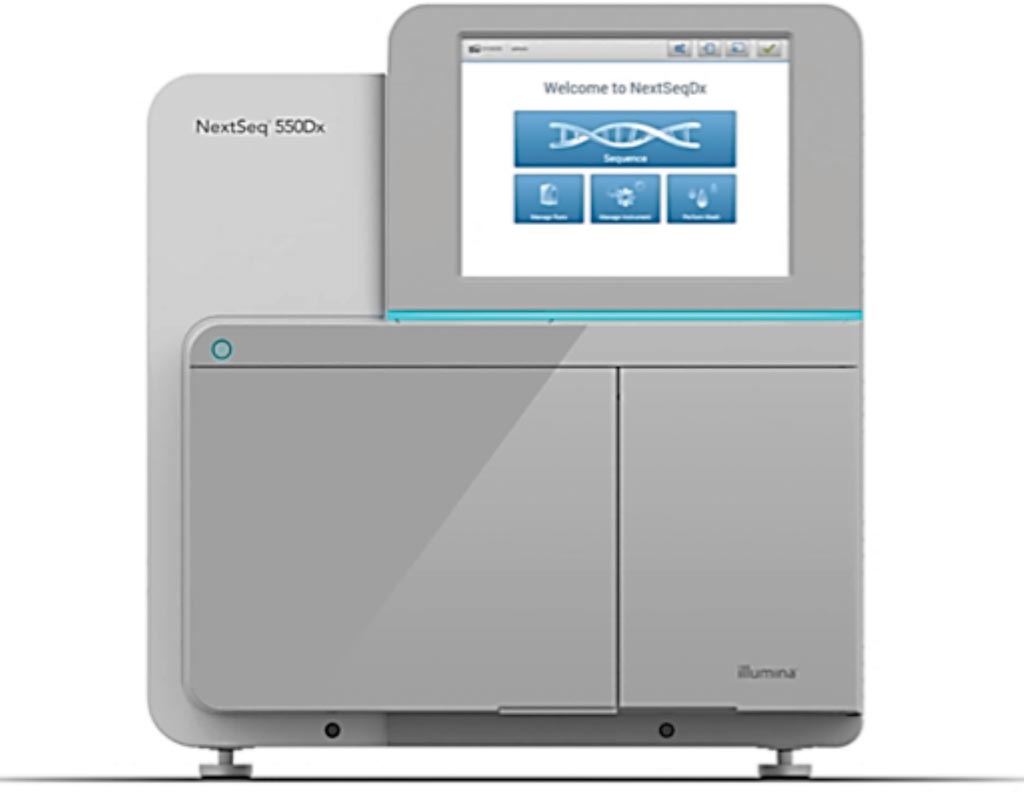Epigenomic Method Developed to Detect Pancreatic Cancer
By LabMedica International staff writers
Posted on 24 Oct 2018
Pancreatic cancers are typically diagnosed at late stage where disease prognosis is poor as exemplified by a 5-year survival rate of 8.2%. Earlier diagnosis would be beneficial by enabling surgical resection or earlier application of therapeutic regimens.Posted on 24 Oct 2018
A non-invasive liquid biopsy assay that tracks epigenetic modifications linked to gene regulation and pancreatic cancer pathogenesis in circulating cell-free DNA (cfDNA) in patient blood samples has been developed and a link has been uncovered between an epigenomic signal in cfDNA and pancreatic cancer in patients.

Image: The NextSeq 550x instrument, a benchtop high-throughput sequencing system (Photo courtesy of Illumina).
A team of scientists working with Bluestar Genomics (San Francisco, CA, USA) investigated the detection of pancreatic ductal adenocarcinoma (PDAC) in a non-invasive manner by interrogating changes in 5-hydroxymethylation cytosine status (5hmC) of circulating cell free DNA in the plasma. The team first collected and isolated plasma samples from a cohort of 51 pancreatic cancer patients and 41 non-cancer controls, then enriched for and sequenced regions of interest.
The team used use a method called "click chemistry" to modify hydroxymethyl groups on cytosine by attaching biotin tags. They then enriched the biotinylated DNA fragments by using streptavidin-coated magnetic beads, which enables an effective "pull-down" assay to separate DNA molecules that contain 5hmC from those that do not contain the biomarker. The team then sequences the fragments using a NextSeq 550 instrument, generating the data that can be used to derive an epigenetic signature.
After performing a set of regression models on the sequenced data, the investigators found that PDAC patients possessed thousands of genes with different epigenomic signatures, including areas of enrichment and absence of 5hmC, compared to non-diseased individuals. By filtering the genes with the most differentially hydroxymethylated states, the team found genes that were previously linked to pancreas development or pancreatic cancer.
The team validated the method on external cohorts from previous studies that contained pancreatic cancer and healthy samples, producing an area under the curve of 74% to 97%. The authors of the study believe that sub-partitioning PDAC and non-cancer individuals into different categories will improve detection and classification of the disease. The study was posted on September 26, 2018, on the preprint server BioRxiv.
Related Links:
Bluestar Genomics













